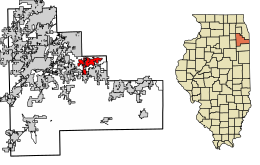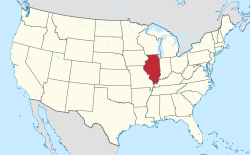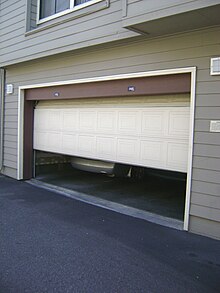Determine the Type of Garage Door and Opener
It is vital to identify the type of garage opener and door you have before you can begin troubleshooting. What do you do when your garage door suddenly stops working? .
Garage doors generally fall into a variety of types based on their appearance and operation.The most frequent doors are roll-up, sectional as well as tilt-up doors.Sectional doorways are constructed from sections of panels connected by hinges, which allow the door to bend as it closes and opens on an upright track.Roll-up doors, typically seen in commercial settings made from the slats which roll into coils.
What do you do in the event that your garage door suddenly stops functioning? - maize
- tax
- Robert Morris University
- golf
Belt drive garage door openers are quieter, however, they employ an elastic band instead of chains. They're an excellent choice for attached garages. Screw-drive garage door openers employ a rod with a threaded steel for moving the garage door. This is the ideal option for noise and cost.
The next step is to check the garage door opener to determine the model. Examine the breaker and plug to confirm that the opener is powered. Inspect the manual release cable and make sure it isn't been pulled. This could cause the door to be disconnected from the opener. Review the tracks and rollers of the door to determine if there are any damage or obstructions and remove any debris.
If you need to, grease the moving components. Insufficient lubrication could cause them to jam or snag.If your door continues to not work, you should consider resetting the opener.This can often resolve electronic glitches or faults.Consult the manual of your opener for specific reset instructions as the process may differ between models.Many modern openers include a reset button, while others may require unplugging them and reconnecting.
In some cases the problem could be more complex such as a broken spring or a damaged motor which requires expert assistance.Springs are under a lot of tension and are dangerous to repair without the proper tools and experience.
In conclusion, when your garage door suddenly stops working you'll be able to tell it is
Check for Obstructions or Debris
It can be a bit frustrating and confusing when your garage door doesn't work suddenly, especially if you utilize it regularly.
One of the basic and most efficient steps you can consider when you are faced with this situation is to look for any obstructions or debris.This simple but effective step is often the most effective way to pinpointing the issue and restoring functionality to the garage door.A small obstacle could cause a problem for your garage door to stop functioning properly.
Begin by examining the tracks that run along the opposite side of the door.Look for obvious obstructions or accumulation of debris.If you find anything that is unusual, such as the twig or the stone stuck in the track, take it out with care.
The issue might not always be apparent. To determine whether the issue is there, try running your hand down the track. Also, make sure that the tracks are correctly aligned. A misalignment could create a jam in the door.Next, inspect the rollers as well as hinges.These parts should move freely without resistance.If they're sloppy or stuck, it might be a sign of accumulated dirt or rust.In these instances, cleaning and lubricating them can often resolve the issue.Use a soft brush or cloth to wipe away any dirt and apply a suitable lubricant in order to make sure that the parts move smoothly.
Examine the area around the door. There are times when items in the garage can fall or move, creating obstacles for the door. Check to ensure that the area is free of obstructions, and that there are any objects that could hinder the door.
If, after clearing all obvious obstructions, the door still refuses to work, consider checking the sensors.
Modern garage doors come with safety sensors to prevent doors from closing if something is detected in the path.Make sure the sensors are maintained and aligned properly, as dirt or misalignment can cause them to malfunction.By ensuring a clear path and avoiding obstructions, you can avoid having to contact a professional solve a problem that is often simple.
Check the wall switch and remote control
If your garage door suddenly stops working and you notice it, it could be an unintentional inconvenience that interrupts your normal routine.In such instances there is a natural feeling of an urgency to fix the problem quickly.One of the first and most effective steps you should take is to examine the remote control and wall switch.
Examining these components can help you avoid costly mistakes.First, consider the remote control.This handheld device is your primary tool for operating the garage door without direct physical interaction.Over time, remote controls can experience issues such as drained batteries, signal interference, or even internal damage.Start by replacing the batteries with new ones.It might seem simple, but dead batteries are a common reason for a garage door not responding.If the problem persists after replacing the batteries, try reprogramming the remote according to the manufacturer's instructions.Additionally, ensure that the remote is within the recommended range and that there are no obstructions blocking the signal.
Next, turn your attention to the wall switch, which is a essential component in the garage door system.
If you feel comfortable and comfortable, you can open the switch to examine for broken or missing wires.In some instances, the remote control and wall switch may appear to be functioning however the door is unresponsive.This could be a sign of a problem with the garage door opener unit itself or other parts like sensors or door tracks.However, starting with the remote control and wall switch is a logical first step.
You can resolve these issues prior to moving on to more complicated troubleshooting.This initial inspection will reduce time and provide confidence that you've taken the right steps to identify the issue.
Check the door's balance manually
When the garage door stops functioning it could be difficult as well as inconvenient.The garage door is an an essential part of your home, providing security, shielding from the elements, and easy access to your vehicle as well as storage area.
The first step you must do when confronted with a malfunctioning garage door is to examine the door's balance.This simple yet effective procedure will allow you to identify any potential issues and stop further damage from occurring to the door or its parts.The stability of a garage door is critical to its optimal functioning.A properly balanced door makes sure that the door opener does not have to perform more work than is necessary, which reduces the likelihood of wear and tear on the motor as well as other parts.An uneven door, however can cause significant problems over time, such as misalignment, broken springs or complete system failure.Therefore checking the door's balance is a crucial test that will help you determine whether the problem is with the door or the opener mechanism.
Begin by disconnecting the garage door opener.
The majority of garage doors are equipped with a release mechanism that can be found on the red cord or handle. After the door has been unplugged from the motor, you can lift it up to waist level and let it go. A well-balanced door will remain in place or move at a slow pace.If you notice that your door isn't balanced It is crucial to address the issue promptly.Door balance problems are typically related to tension in springs. They could be risky to adjust yourself due to the pressure they're under.It is recommended to consult a professional for assistance in adjusting spring tension and ensure that the door is well-balanced correctly.Doing so not only resolves the immediate issue, but also will increase the longevity and stability of the garage door system.
In conclusion, manually testing the door's balance is a crucial initial step when your garage door suddenly stops working.
This method helps identify the root of the problem, which could be in the door's balance or elsewhere in the system.By being aware of the importance of balance for your door and addressing any issues promptly it will prevent any damage to your garage door and ensure that the garage door functions in a safe and efficient manner for the years to in the future.Tracks and Rollers
This easy check can reduce your expenses and save you time when your garage door is not working.
The tracks and rollers of the garage's operation system are critical. The tracks comprise steel rails that guide the door when it opens. The rollers run on the tracks.
As time passes, these components can become dirty, misaligned or worn out, resulting into problems with operation.Start by inspecting the track for any obstructions. The accumulation of dirt, dust and even small particles could be accumulating, which causes rollers to struggle to move along the path. Cleaning the tracks with a damp cloth can solve this issue.
The next step is to examine the alignment of the track. Tracks should be parallel and perfectly straight. If they appear bent or are out of alignment, the door might jam. You can tap the misaligned section back into position with an instrument made of rubber. However, if damage is severe, it's recommended to consult professionals who can re-align the tracks correctly.
The inspection of the rollers is equally important.Over time, the rollers could get damaged or worn out particularly if they're constructed out of plastic.
Look for indications of wear and tear for example, cracks or chips.If the rollers seem worn, think about replacing them with new ones.Metal rollers that have ball bearings usually offer more durability and smoother operation.Additionally, lubrication also plays a vital role in maintaining seamless movement of tracks and rollers.Applying an lubricant based on silicone can reduce friction and prevent wear.Make sure to lubricate the moving parts, such as the hinges and springs, to make sure the garage door runs efficiently.
By ensuring that these components are well-lubricated and aligned, it is possible to make sure that the garage door is restored to full function.
Regularly inspecting and maintaining these components will help prevent any malfunctions from occurring in the future. This will extend the lifespan of your garage system.Be on the lookout for visible damage or Wear
It's frustrating and inconvenient when your garage door stops completely, especially when you're heading home, or trying to lock your house to sleep.
Garage doors are a complicated system that is made up of a variety of elements, including springs cables as well as rollers and tracks, each of which plays essential roles in the smooth operation.Over time, these parts can experience wear and tear because of regular use and exposure to environmental elements.
When you conduct a thorough examination, you will be able to identify any obvious signs of damage that could be creating problems for the door. Start by inspecting the springs. They are responsible for lifting and lower the door. Find evidence of wear or rust. A broken or worn out spring can make the door inoperable, therefore it's crucial to repair this issue immediately. After that, examine the cables for fraying or broken strands.
What do you do in the event that your garage door suddenly stops functioning? - maize
- Hickory Hills
- rust
The door is yet another part that needs care. Look for visible dents, warping, or bends.
Make sure that the sensors at the door are also clean and in alignment. A misalignment or dirt build-up could cause the sensors to fail and stop functioning.While a visual inspection can offer valuable insight, it is essential to consider that some problems might not immediately apparent.If you don't see any obvious evidence of damage or wear, it might be necessary to speak with a professional technician to diagnose and resolve the problem.However through an initial inspection, you can often find and correct minor problems prior to them escalating into significant and costly repairs.
This approach will not only help you identify the problem faster, but it will allow you to take action to restore the proper functioning of your garage door.
You can extend the life of your garage door simply by being proactive.Check for Springs and Cables
When your garage door stops working and then it stops working, it can be annoying as well as inconvenient.One of the most essential steps you need to take in this instance is to look at the springs as well as cables.These components are integral for the proper functioning of your garage door, and issues caused by them are usually the cause of a broken door.
The springs play a significant part in the functioning and smoothness of your garage by supporting the weight. There are two main spring types, torsion and extension. Torsion springs are placed above the garage and twist to store energy. Extension springs are on the other hand are installed on to either side of the door and extend to supply the required force.
As time passes over time, these springs may wear out, break or lose tension, leading to problems with operation.The cables may also be damaged by wear and tear. They may fray or snap under pressure.
In assessing the springs and cables, start by checking them.Look for signs of rust, wear or fraying.If you spot a broken cable or spring you should avoid opening the door until the issue has been addressed, as forcing it could cause more damage or even lead to an accident.If the springs appear intact but the door is still not functioning, it might be due to them losing tension and require adjustment.
Safety is the most important factor while working with garage door parts.
The springs and cables are stretched and may cause serious injuries. If you do not have any experience with garage door repairs, it's best to call an expert. They will have the equipment and know-how necessary to replace or repair these components. This will ensure the garage door operates properly and safely.In conclusion, when your garage door suddenly stops working, assessing the springs and cables is a key step in diagnosing the problem.Understanding their role and potential issues can help you determine whether a simple adjustment is needed or if professional intervention is required.Taking prompt action not only restores functionality but also ensures the safety and longevity of your garage door system.
Consider Calling a Professional Technician
Garage doors can suddenly stop working, causing you to lose time. It could put your home at risk.
It is tempting to grab an instrument box to attempt a fix by yourself however, it is recommended to seek out a professional. This is not just about your safety, but also give you a long-lasting and more effective solution.Garage doors are complex systems composed of various components such as springs, cables, tracks, and electronic parts.Each of these elements plays a crucial role in the door's operation, and a malfunction in any part can cause the entire system to fail.Without proper knowledge and experience, attempting to fix these issues can be dangerous.For instance, garage door springs are under high tension and can cause severe injury if handled improperly.Professional technicians are trained to deal with these risks safely, using the right tools and techniques to handle repairs.
What do you do in the event that your garage door suddenly stops functioning? - slavery
- slavery
- maize
- English
Additionally, a professional technician is a skilled professional with experience and knowledge that a layperson simply does not possess.
They can quickly diagnose the issue and identify whether it's a minor problem, like a misaligned track, or something more serious, like a broken spring.This expertise not only saves you time but also prevents the potential for further damage that can occur with incorrect handling.Professionals also have access to high-quality parts and can ensure that replacements match the specifications of your existing garage door system, leading to better functionality and longevity.A professional technician may be more cost effective in the long haul. Although the DIY option may appear more affordable at first but it could result in expensive and costly repairs later on.
A lot of technicians offer warranties on their work, which provides peace of mind knowing that if something goes wrong, you are covered.A professional's help will save you time and money. Trying to understand the workings of garage doors, purchase the appropriate tools and complete a repair could take you some time or even days. A technician can solve the issue quickly and allow you to get back to normal.
The urge to fix the garage door on your own is strong. However, calling in professionals is the safest choice, as well as the safest and most effective choice. Their expertise and access to top-quality replacement parts and their capacity to perform quick and precise repairs ensure that your garage runs smoothly and protecting your home.


















